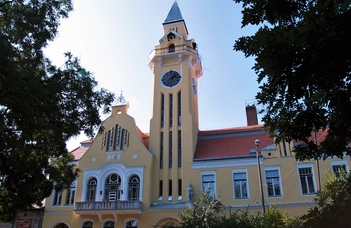Copyright © 2024 National Laboratory for Social Innovation (TINLAB) All rights reserved
Return To Top
The research project, called “Exploring the complex patterns between the people and places: The latent place-related attitudes of residents of Nyírbátor, Hungary”, is carried out at Eötvös Loránd University.
Nyírbátor is a medium-sized city in Eastern Hungary, which has undergone significant developments in the last 15-20 years. Our research aims to present a transdisciplinary methodology that synthesizes knowledge from urban studies and environmental psychology, supporting decision-makers ‘timeless’ policy solutions and local society to use the resources at their disposal to develop their capacities more reflectively. The key steps in our research are the following: unfolding the spatial and governing characteristics of the city; socio-economic analysis of the municipality: using statistical data from the central statistical office’s database; quantitative analysis (questionnaires): sociodemographic and socioeconomic questions, connotative meaning dimensions of the settlement, satisfaction scales as a measurement of well-being (neighborhood, city, and life in general), perceived attractiveness of certain characteristics of the settlement, latent attitudes (place attachment and place identity); qualitative analysis (focus group interviews): semi-structured interviews with local stakeholders (building on the qualitative meaning of ‘sensing’ of the city); urban public space observation: observing the people’s behavioral patterns of public space in the city.
In our research a new approach of urban analysis is being developed: based on the theory of process-oriented urban development, this methodology can be seen as a tool to assess the well-being of residents, to unfold how people perceive the connections and associations between the urban spaces and the socio-economic processes, and to observe the place attachment patterns of locals.
From this research, local authorities and representatives of public sector booth can benefit, since this study could complement the practice of urban planning in Hungary. This new approach of urban analysis can also be useful for private companies, as the methodology can provide reliable data to support the urban development projects they have formulated and implemented. A third group of stakeholders are the residents. As our analysis reveals people’s relationships to specific urban places, it provides tools to test complex patterns between the people and places, thus making the city more liveable and responsive to their needs.
Andrea DÚLL professor (ELTE Faculty of Education and Psychology)
dull.andrea@ppk.elte.hu
MTMT